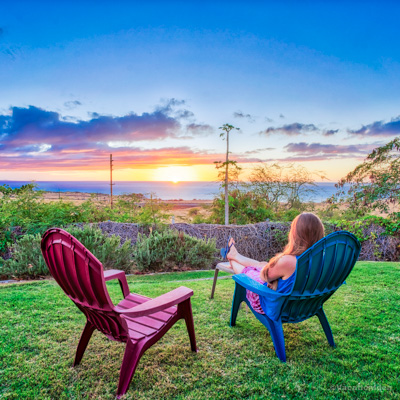Best Places to Visit in Hawaii

Searching for the best places to travel in Hawaii? Well, you are in the right place! Chris and I lived here for six incredible years, and our son was born on the Big Island. Nearly 9.5 million vacationers visit the Hawaiian islands each year, and while it's one of the most expensive vacation destinations (once you add up the airfare, accommodations and food), I think it's also the most magical place on the planet!
And, while Hawaii can be as luxurious as you want it to be, it also offers countless free natural wonders, affordable vacation rentals, unique tours, and affordable food with some of the freshest avocados and papayas I've ever tasted anywhere!
I have to warn you, though, that I'm quite biased because I love the Big Island of Hawaii the most (by far!). The Big Island is BIG, covering about 4,028 square miles (more than all the other Hawaiian islands combined), incredibly diverse, with many areas still off-the-beaten-path to discover! By the end of this article, I think I can convince you to love it too. From my six years of living in the tropical Aloha State (and and our recent four week road trip) here are my favorite experiences that I hope you’ll love as much as we did.
Best Time to Visit Hawaii
Hawaii islands' tropical climate makes it great to visit year-round! If your mission is to see humpback whales, you need to visit from late December through mid-March (some years, they arrive as late as January from their long journey from Alaska to give birth in Hawaii).
When we lived in Hawaii full time, my favorite weeks were the tourist-free weeks which were as follows: 3-4 weeks after Easter before school ends at the end of May; the last week in August; September after labor day, October (but try to avoid Columbus Day), and early November (before Thanksgiving).
Worst Time to Visit Hawaii
There is a worst time to visit Hawaii? You betcha! For me, Thanksgiving, Christmas, New Year's, Memorial Day and Labor Day are the worst! First thing, the arrival can be terrible with long lines to pick up your rental car even if you have a reservation because "the system is down" (yes, even if you have a membership with one of the car rental companies).
Once you finally reach your resort, you get people arguing about chairs on the beach, then making shouting phone calls to the office from the beach chair while you are trying to relax. Or, even worse, spearfishing near my kid in one foot of water...you name it! We absolutely avoided resort beaches during those times! The bit of good news is that there is always a secluded spot to call your own, especially on the Big Island of Hawaii...
How to Get to Hawaii
- By Air: Most international and mainland U.S. flights arrive at Daniel K. Inouye International Airport (HNL) in Honolulu, Kahului (OGG) on Maui, or Kona (KOA) on the Big Island. There is also Hilo (ITO) on the Big Island, and Lihue (LIH) on Kauai.
- Interisland Flights: You need to fly to get from one island to the next. There are no passenger ferries.
How to Get Around Hawaii
You need a car to vacation in hawaii, except in Waikiki.
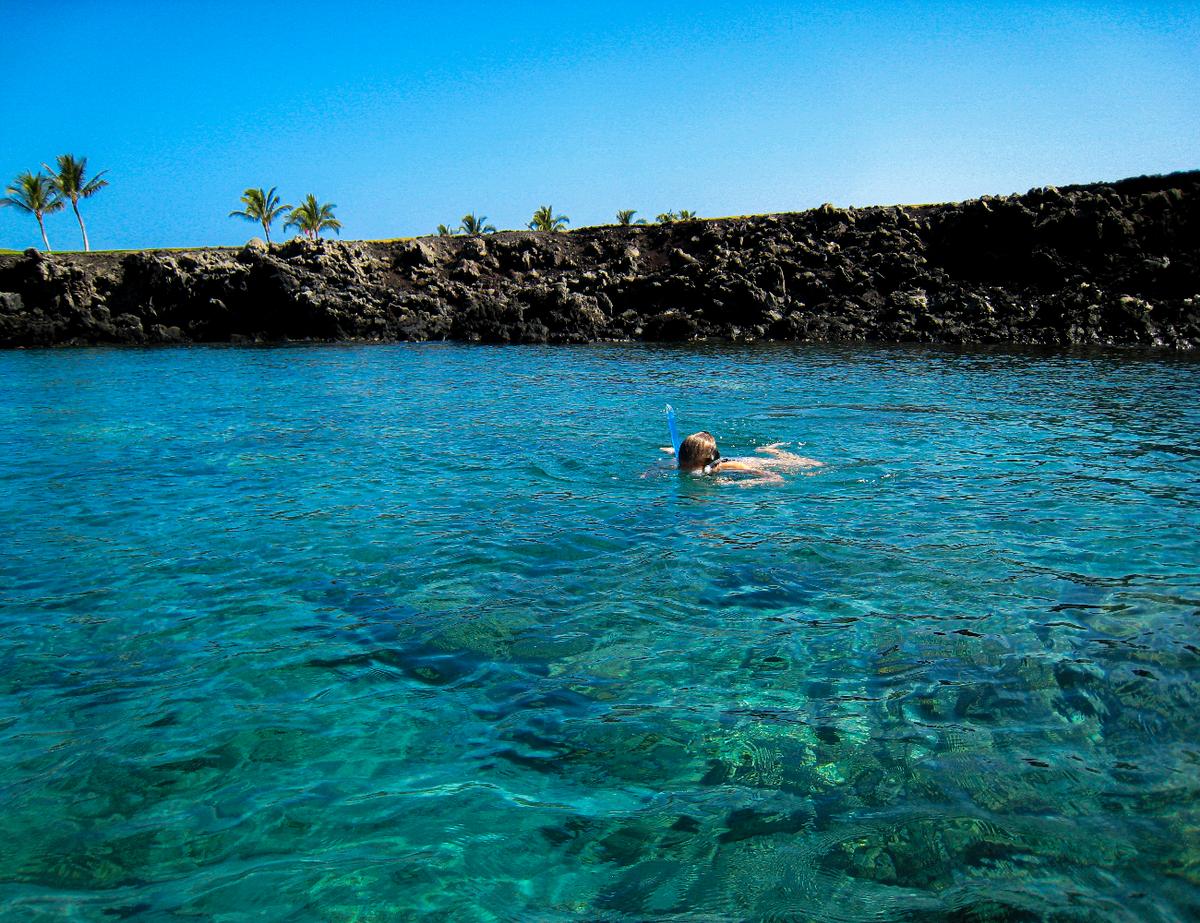
Big Island of Hawaii
Ready for an unforgettable island escape? Check out the Big Island, my absolute favorite, most beautiful place not just in Hawaii, but on the entire planet! Chris and I lived on this island for six years (our son for two, because he was born here!). Even now, every time we return, it feels like stepping back into something familiar and steady, but also vast and elemental.
Every corner with sharp 'A'a rock (pronounced "ah-ah") reminding you that the Big Island is unlike anywhere else, where raw volcanic power (the island is still growing up to 600 acres per year!) and lush tropical beauty exist side-by-side.
When friends ask me where to go on a family vacation in Hawaii, I recommend the West coast of the Big Island. We started our road trip here. True to its name, The Big Island of Hawaii is BIG (larger than all the other Hawaiian islands combined!). So even during peak tourist times (all the holidays and in the summer), people somehow spread out between all the beaches, waterfalls and attractions here, so it never gets quite as crowded as the other Hawaiian islands!
Moreover, to me, what makes the Big Island so special is its sheer diversity where in a single day, you can sip Kona coffee at sunrise, walk across black sand beaches, hike to hidden waterfalls, and end the night stargazing atop one of the world’s best observatories!
Flying into Kona International Airport on my visit last month, I settled into the oceanfront 5-star Mauna Lani Hotel, surrounded by sweeping Pacific views. For six sun-soaked days, I chased lava landscapes across Hawaii Volcanoes National Park , snorkeled with my husband and son off Keauhou Bay, picked up the freshest tropical fruit at the local farmers’ markets, and ended my evenings under skies on the hotel beach.
What I loved best:
We loved returning to our comfortable room at Mauna Lani Hotel, getting into the glass elevator to the lobby for the evening Hula show, and tiki torch lighting at sunset, my personal highlight!
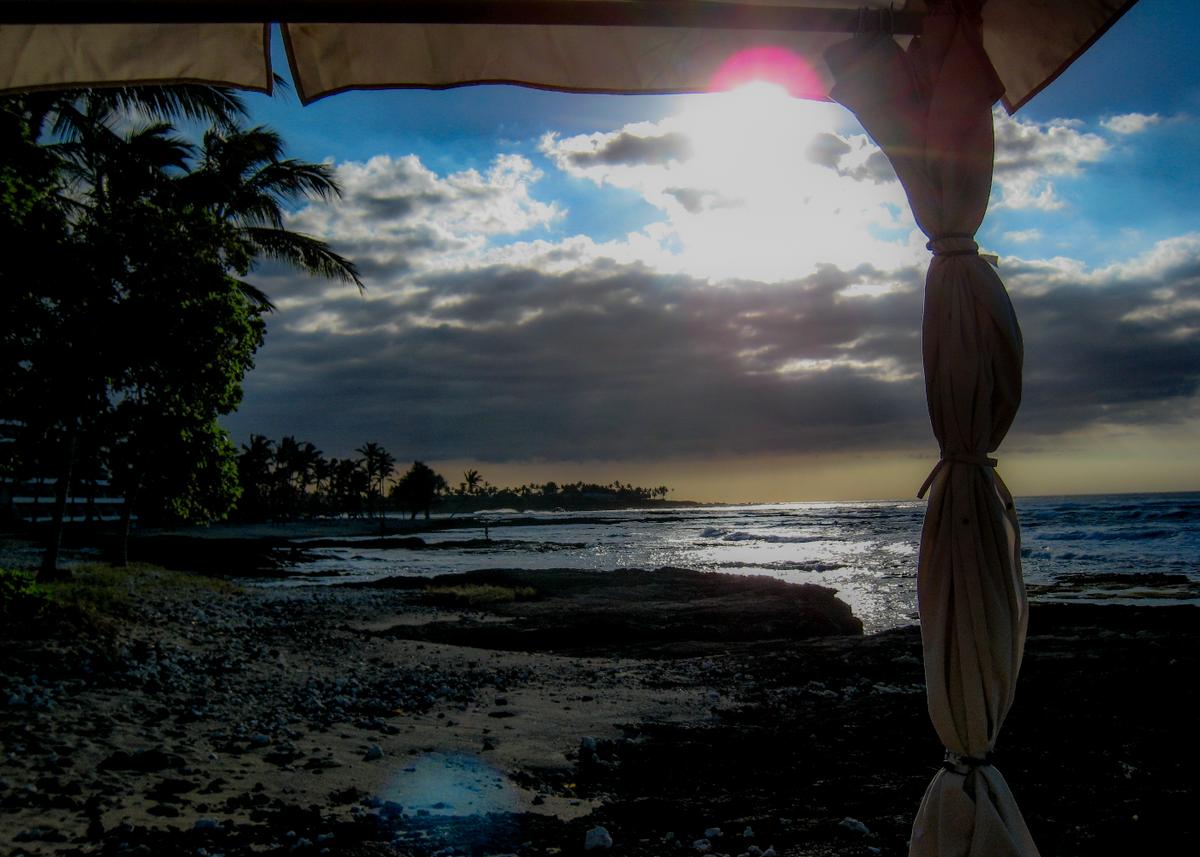
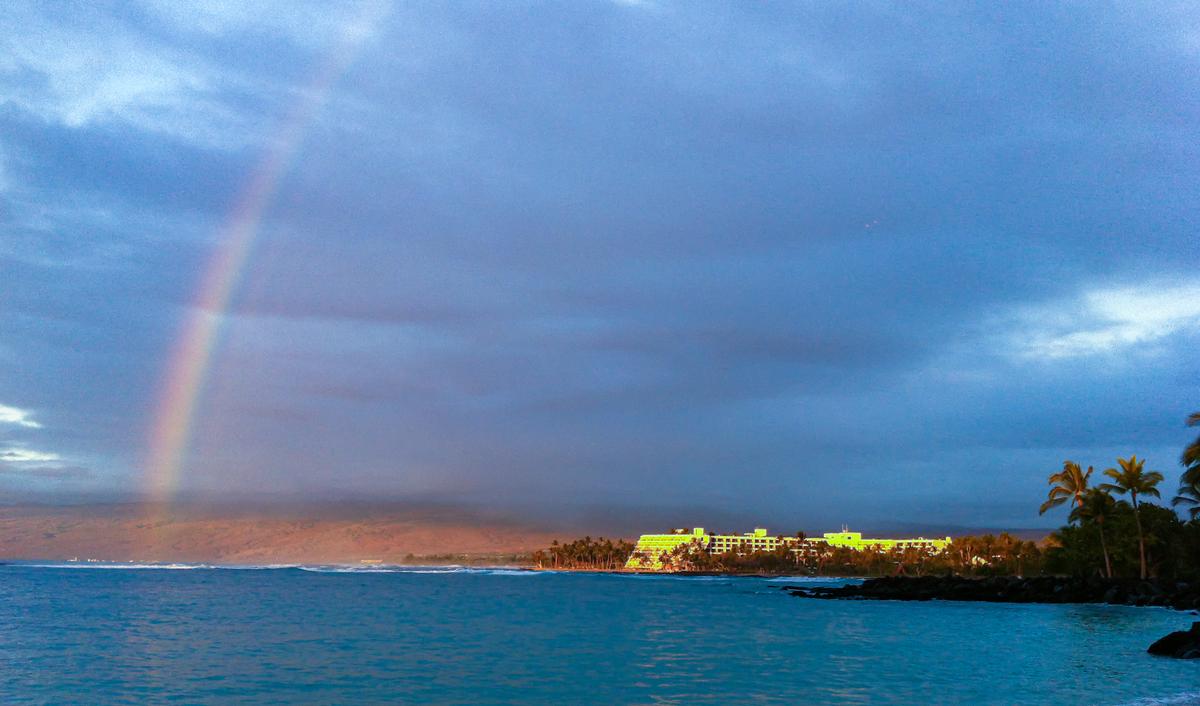
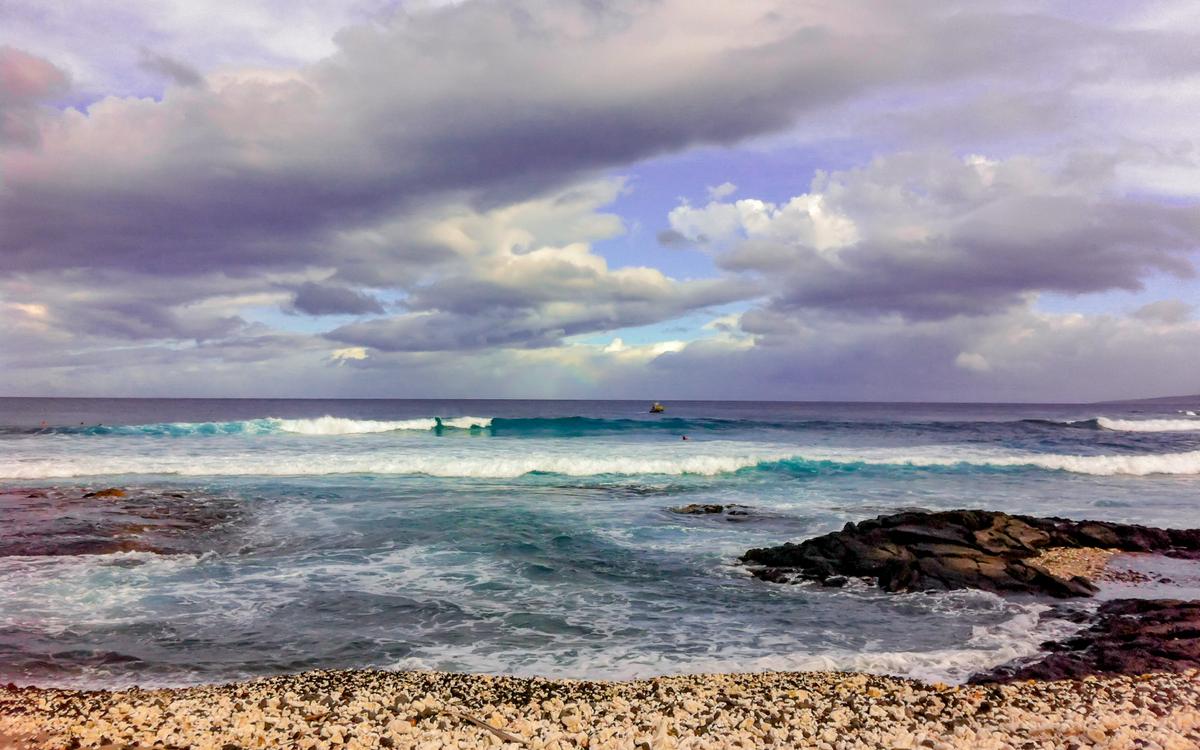
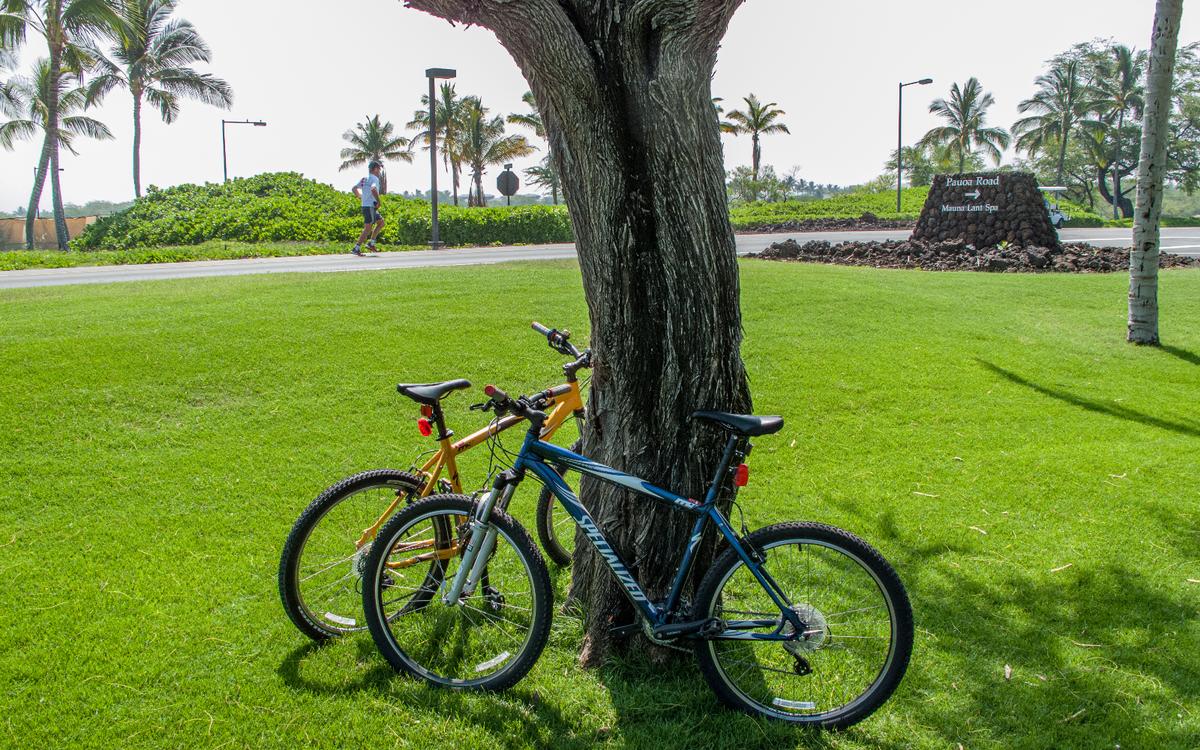
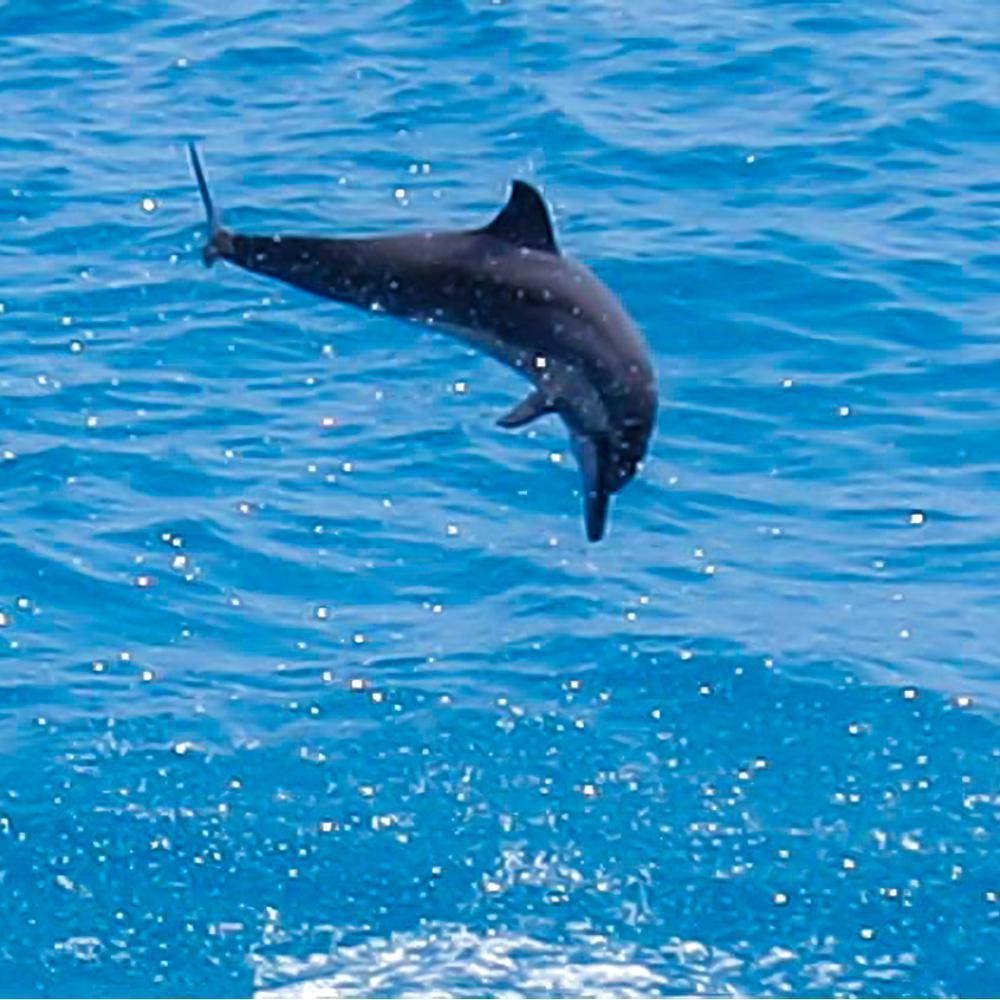
Dolphin Quest
Located at the Hilton Waikoloa Village, for me, this is one of the most unique experiences on the Big Island! Kids absolutely love Dolphin Quest and although it's expensive, we've come back to swim with dolphins many times while we lived nearby.
From the moment we walked through the resort from the visitor parking log, the setting felt dreamy with tropical gardens, winding paths, and (best of all!) the dolphin lagoon. You are actually free to admire the dolphins and walk around the lagoon even if you don't have a reservation - you just won't be able to get in the water with them! I personally love the cafe that sits right next to the lagoon letting you dine while watching other people having a dolphin encounter, something we've done many times.
For us, meeting the dolphins with Dolphin Quest was absolutely magical. Standing at the edge of the lagoon together, we watched them glide effortlessly through the water and approach us.
My favorite moment was when we were close enough to interact—gentle touches, and the unmistakable feeling of connection that made time seem to slow down.
The trainers shared stories about the dolphins and their care, which made the experience feel even more meaningful. The encounter itself was pretty short but left such a lasting memory that the rice was totally worth it!
Afterward, we wandered the resort together, still buzzing from the encounter, stopping to watch fish in the lagoons and enjoying the soft island breeze.
As evening approached, the entire village glowed with warm light, reflections dancing across the water and creating a peaceful, romantic atmosphere that felt perfect for lingering.
Local tips: Trained marine specialists at Dolphin Quest guide you through every moment, whether you’re feeding a dolphin, swimming alongside one, or simply learning about their behaviors. If you really love dolphins, you can book a room facing the dolphin lagoon overnight at Hilton Waikoloa Village (we did this once and it was totally worth it!), although I want to point out that you don't need to be a guest of the hotel (from $465/night) to book Dolphin Quest.
In fact, even if you are not staying overnight at Hilton Waikoloa Village or paying the Dolphin Quest fee, you should check out the dolphin lagoon. The resort parking lot is large, don't worry. However, there is a parking fee. My insider tip is that you can get free parking if you dine or purchase something at the resort (Dolphin Quest counts!) - just remember to ask to get your parking ticket validated when you make your purchase!
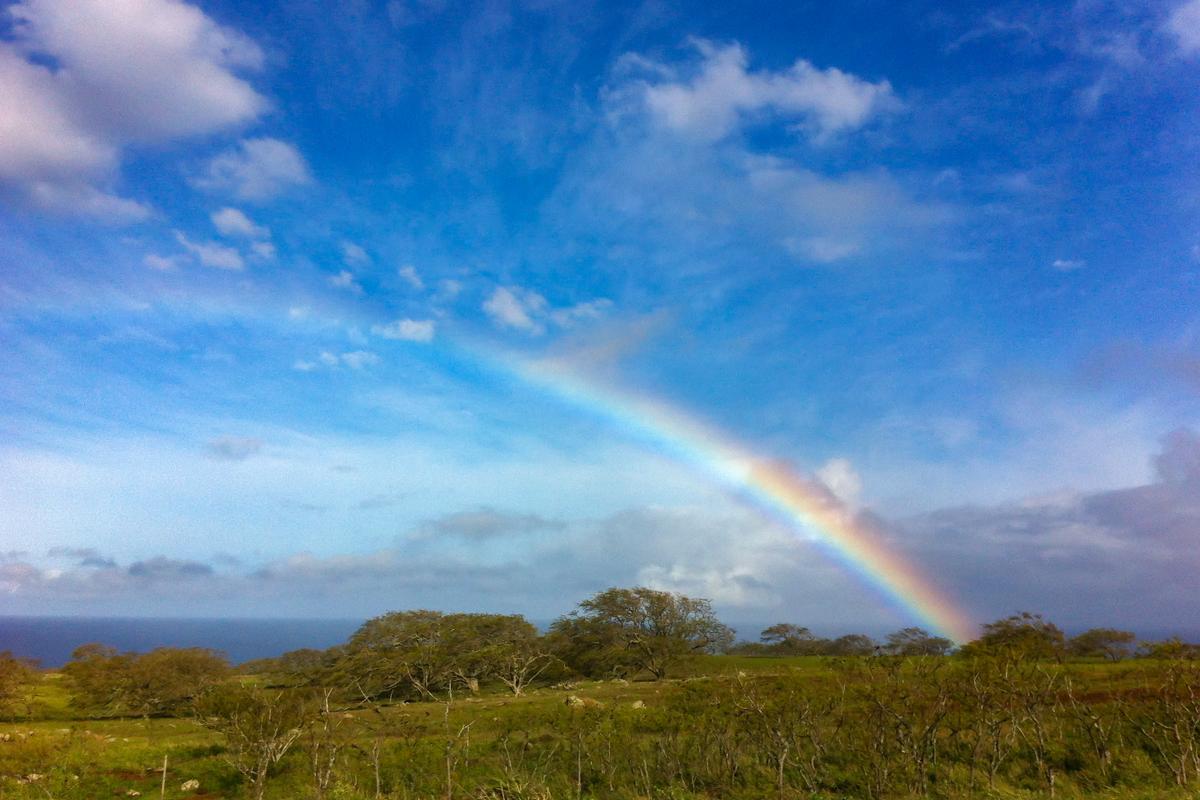
Hilo
On the eastern shore of the Big Island (it's a 90 minute journey from Kona!), this is one of the most unspoiled and soulful towns I’ve ever visited in the USA and I think it’s one of the absolute best places to visit on your road trip in Hawaii. Why? First off, Hilo offers dramatic waterfalls, botanical gardens, affordable farmers markets. I think it’s Hawaii at its most natural and heartfelt.
Plus, I adore Hilo's contrast to Kona’s sunny coast. We pulled in early in the day and I wasn't that surprised that it was raining! I timed my visit for the Merrie Monarch Festival in "America's Wettest City", a weeklong celebration of hula, lei-making, and Hawaiian culture, and it turned out to be the most soul-stirring experience of our last trip!
During our stay at Grand Naniloa Hotel for seven days, we first learned about history at the Pacific Tsunami Museum, then stopped for snacks at Hilo Farmers Market, marveled at Rainbow Falls and nearby Akaka Falls State Park, and walked through the Liliuokalani Gardens, a peaceful Japanese-style park by the bay. Next day, we also had easy access to Hawaii Volcanoes National Park, just 45 minutes away.
Getting around Hilo is easiest with a rental car, especially if you want to explore the surrounding areas. While there is a local bus system, I have to war you that it’s limited and not ideal for sightseeing. Parking is generally easy to find. If you’re flying in, Hilo International Airport is small and convenient, making arrivals and departures refreshingly simple compared to larger Kona airport.
Another great way to experience Hilo and the Big Island is with an organized tour. We found tours especially helpful for visiting places like Volcanoes National Park, where having a knowledgeable guide adds so much context to what you’re seeing. Plus, I think it’s a relaxed way to cover a lot of ground without worrying about logistics.
What I loved best:
Our Junior Suite ($433/night) at at Grand Naniloa Hotel had the most unbelievable ocean views that made us feel like we were sitting over water, my personal highlight.
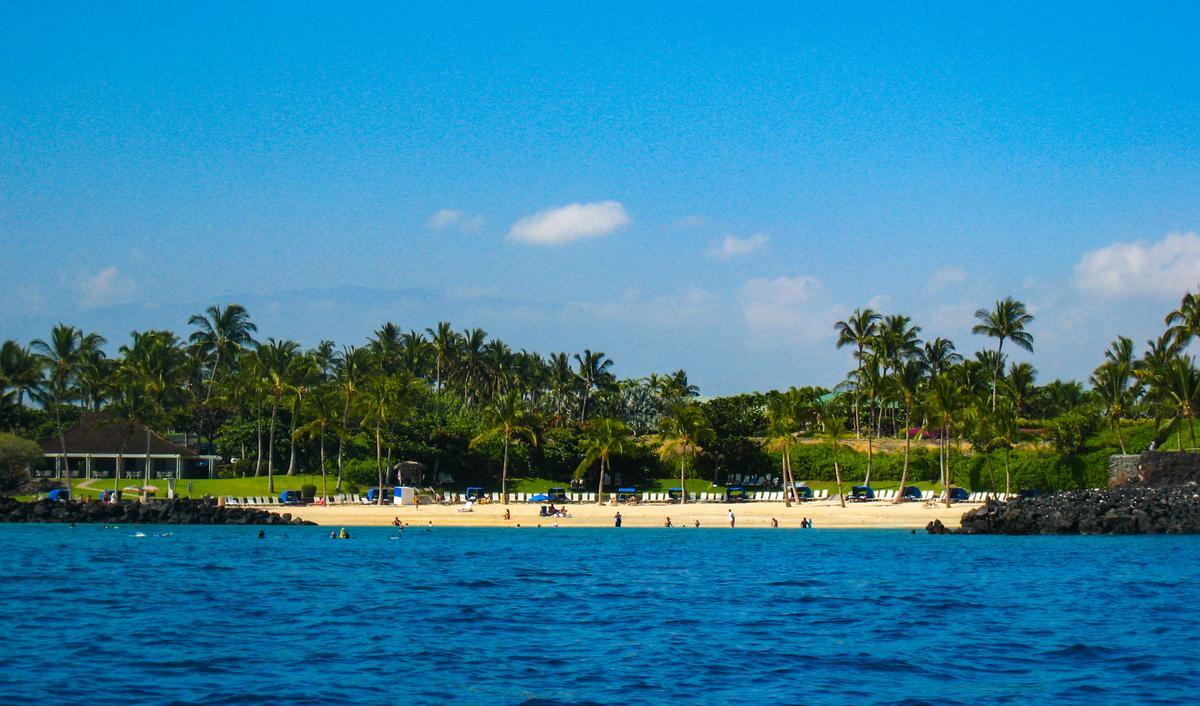

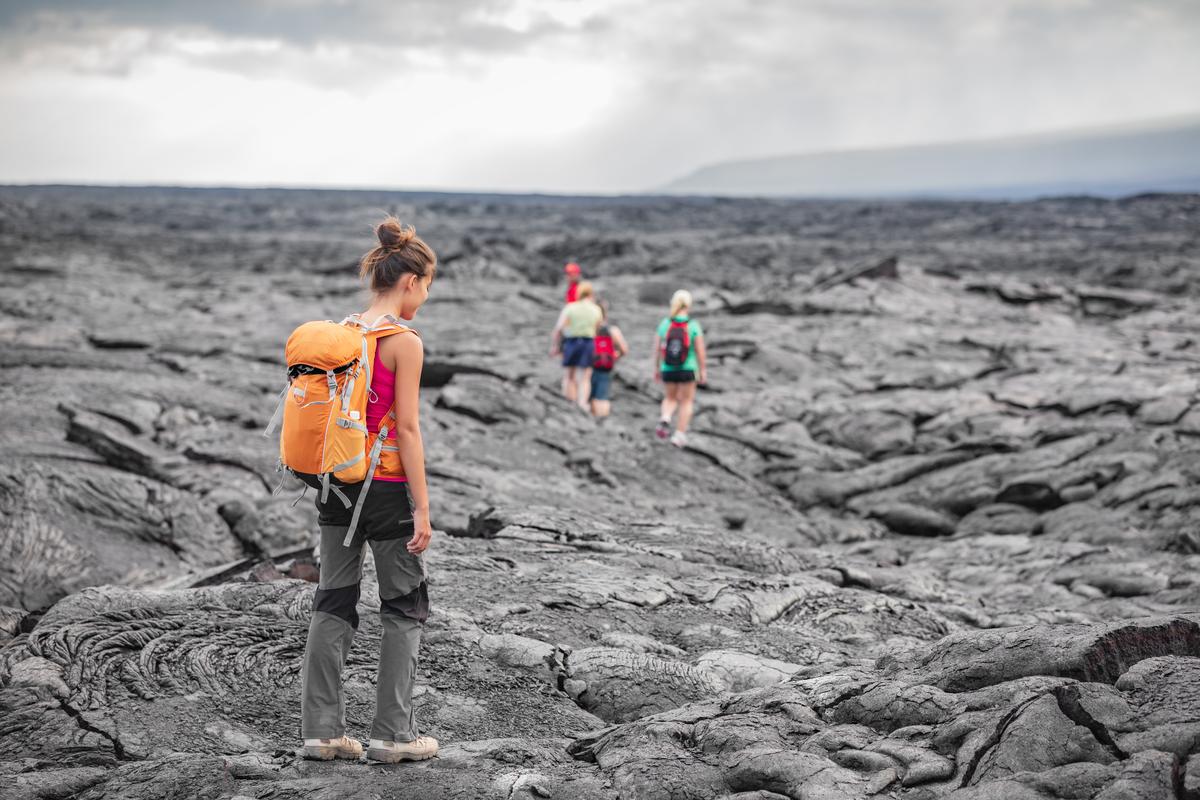
Hawaii Volcanoes National Park
Ready for an otherworldly adventure? This is one incredible National Park you won't want to miss, a real standout!
From the moment we entered the park, the landscape shifted dramatically, lush rainforest giving way to vast lava fields that stretched endlessly, making us feel small in the most humbling way.
First, be sure to stop at the Jaggar Museum & Overlook to learn about volcanology and Hawaiian legends.
Next, standing at the edge of Kilauea for a while, we watched steam rise from the crater. Here the quiet power of it all creating a sense of reverence that naturally slowed us down.
later, driving down Chain of Craters Road felt almost surreal, the scenery changing with every mile as hardened lava met the deep blue of the ocean.
As evening approached, the park grew even more magical. The air cooled, the sky softened, and the volcanic landscape took on deep reds and purples as the sun began to fade. Our local guide talked about how Hawaii Volcanoes National Park is more than just geology, it’s sacred land deeply tied to Hawaiian culture, with stories and traditions.
Local tips:
The park is spread across more than 300,000 acres and home to two of the world’s most powerful volcanoes, Mauna Loa and Kilauea! So I assure you that your visit here will be uniquely your own!
If you don't mind a day of driving, you can easily visit the park on a day trip from Kona or Hilo but you can also stay nearby in 3-star Aloha Crater Lodge and Lava Tube (about $150/night) if you want a deeper immersion and more time to explore.
What I loved best:
Returning to the comfort and Hawaiian decor in our room at Aloha Crater Lodge. The outdoor hot whirlpool was a nice touch and was my personal highlight!
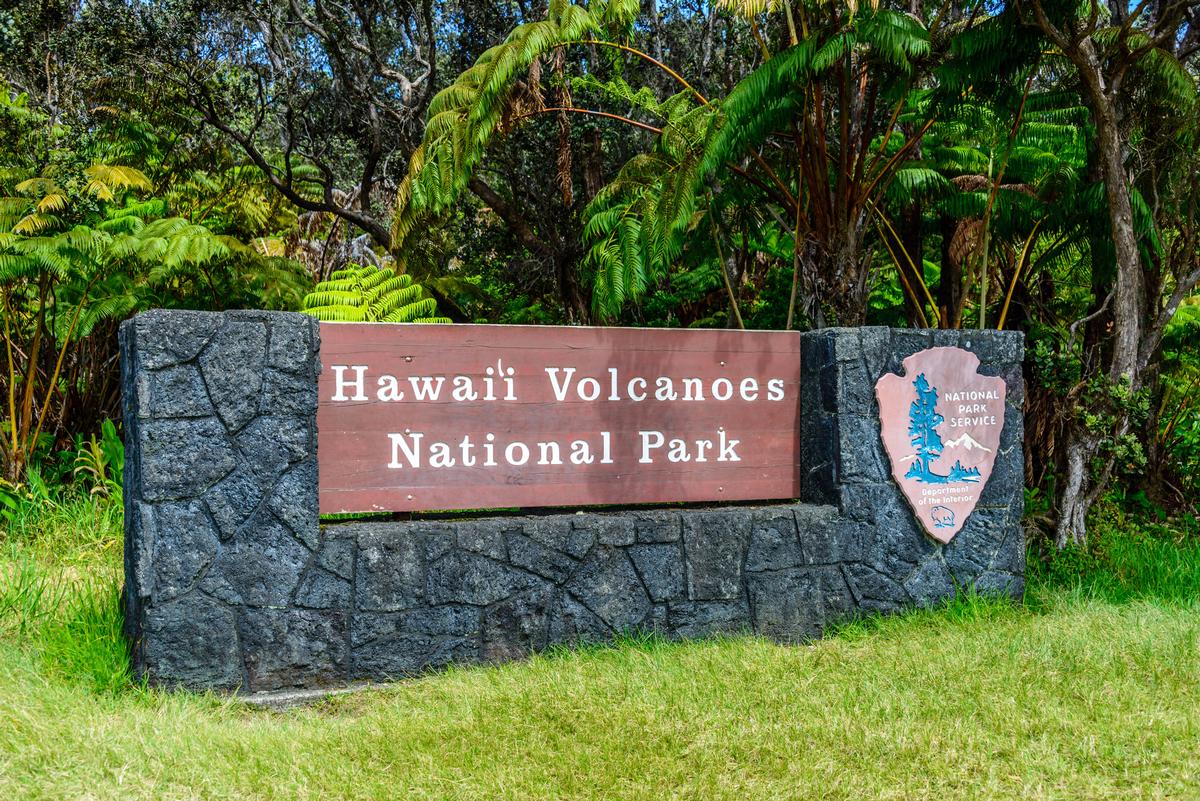
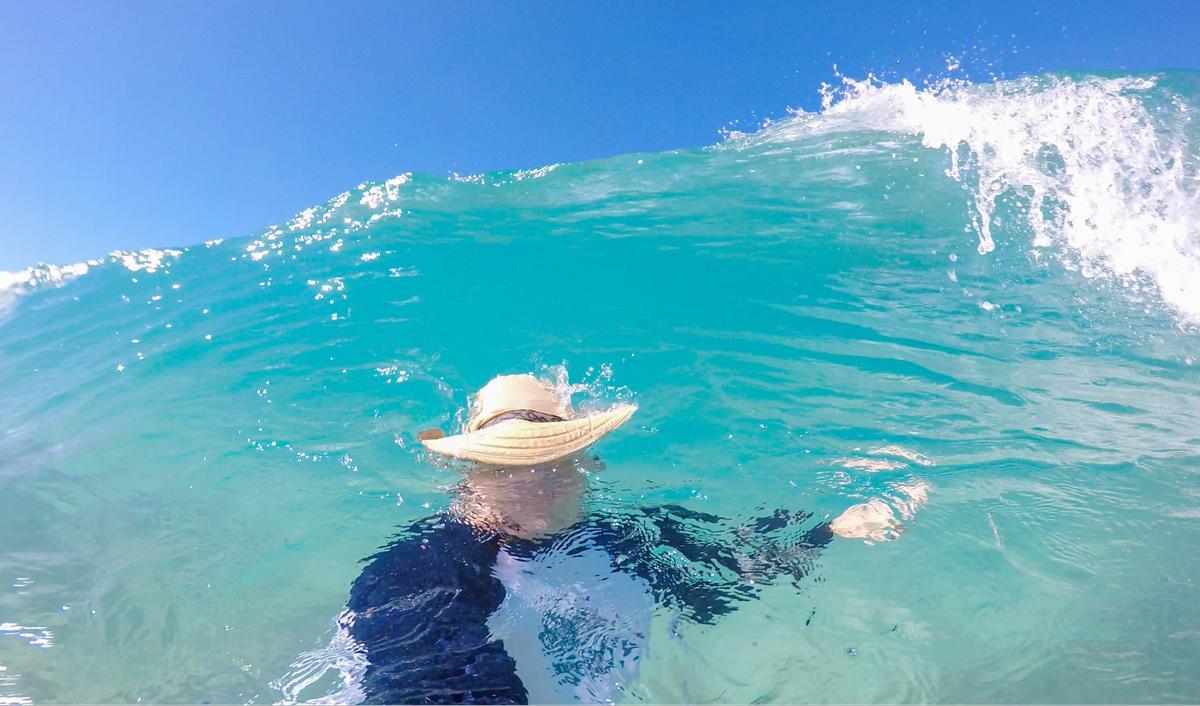
Maui
Maui is my second favorite island in Hawaii, and one of my favorite romantic vacation ideas in the tropics.
When we land at Kahului Airport, we like pick up snacks nearby at Down to Earth Organic & Natural and then head to the beach for a picnic. It's the best way to re-set and dive into vacation-mode after a flight. We had a chance to taste the famous Shaka Pops and they were very tasty!
After we dried off, we had a snack on the beach and enjoyed watching surfers bobbing up and down, waiting for that perfect wave to ride.
After a scenic drive, we had lunch at Grand Wailea, then relaxed on the beach, followed by a romantic dinner at the resort restaurant.
Next day, we drove on the famous Road to Hana. It was slow going as far as road trips go (with parts of the road one-way only), but we saw amazing waterfalls, took lots of photos and enjoyed the experience (we spent two days in Hana).
I loved our ocean view cottage (in my photos below) for two days at Hana-Maui Resort, one of my favorite all inclusive resorts in the world because of its incredible Pacific views and fantastic organic, local food, a real standout.
Next, we drove back on the Road to Hana towards Kahului and spent ten days in an affordable vacation rental in Makawao up away from the ocean. I love the paniolo (Hawaiian cowboy) heritage here, plus it put us close to the summit of Haleakala National Park. We woke up at 4:30am next morning and drove up to see the sunrise. It was absolutely spectacular and I could see why ancient Hawaiians called it Haleakala, which translates to the "House of the Sun" in Hawaiian!
What I loved best:
We spent several hours after hiking at the top of Haleakala, just enjoying the other-wordly atmosphere, photographing unique plants, my personal highlight!
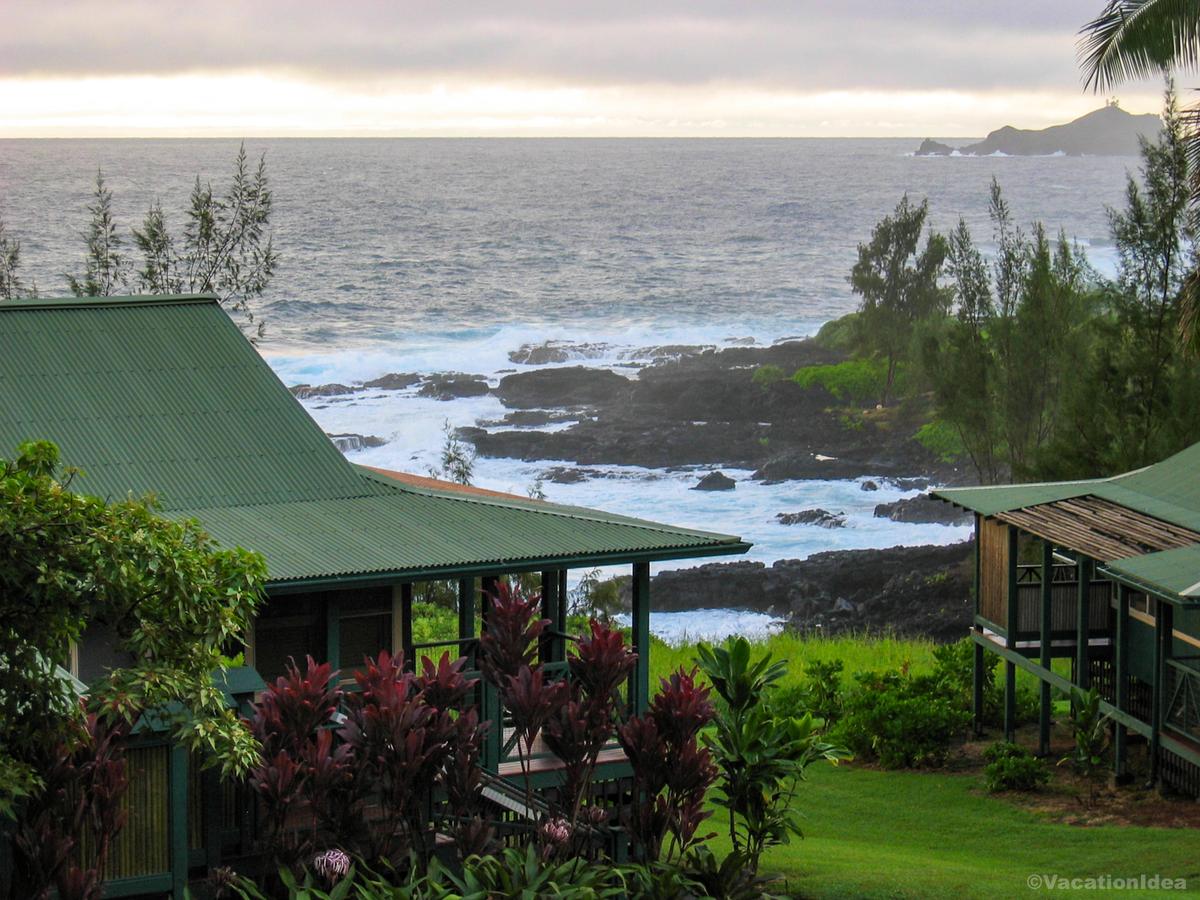
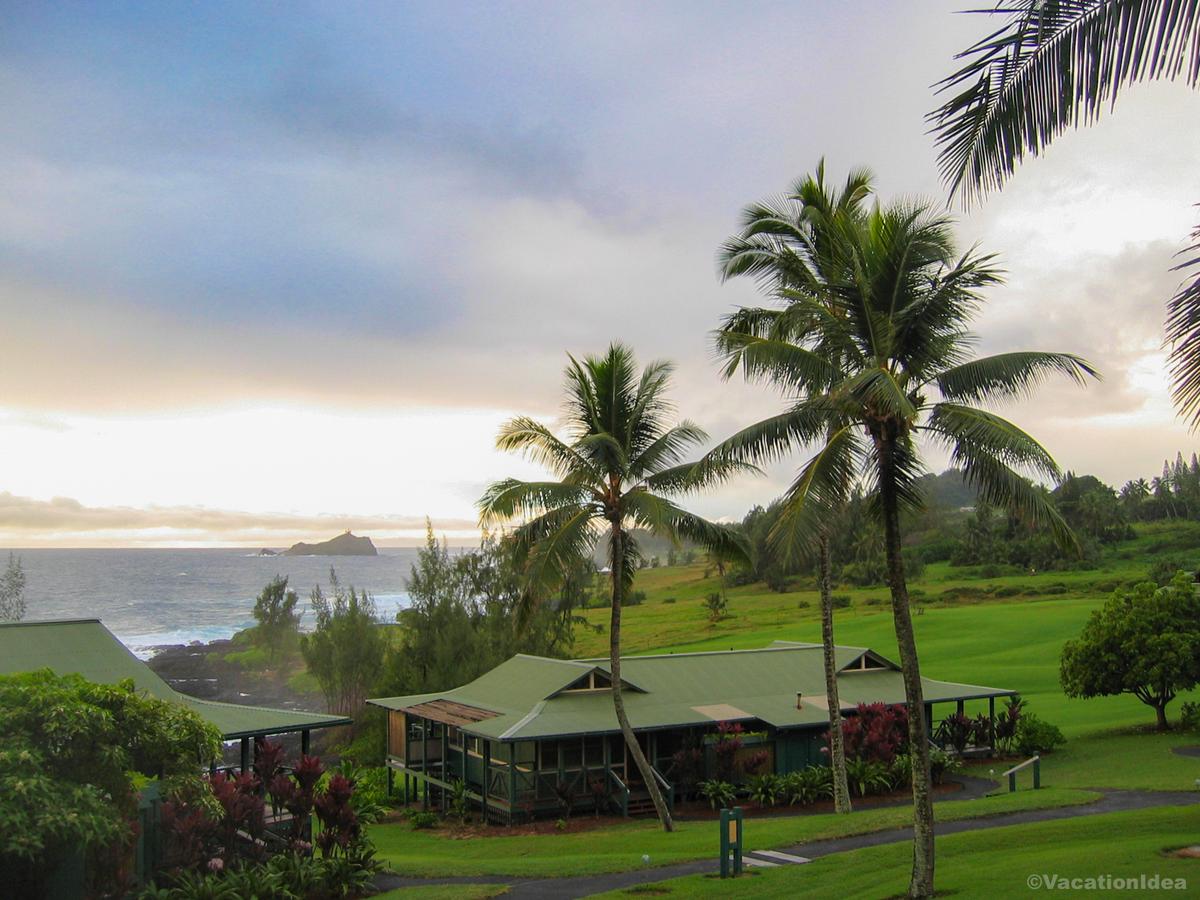
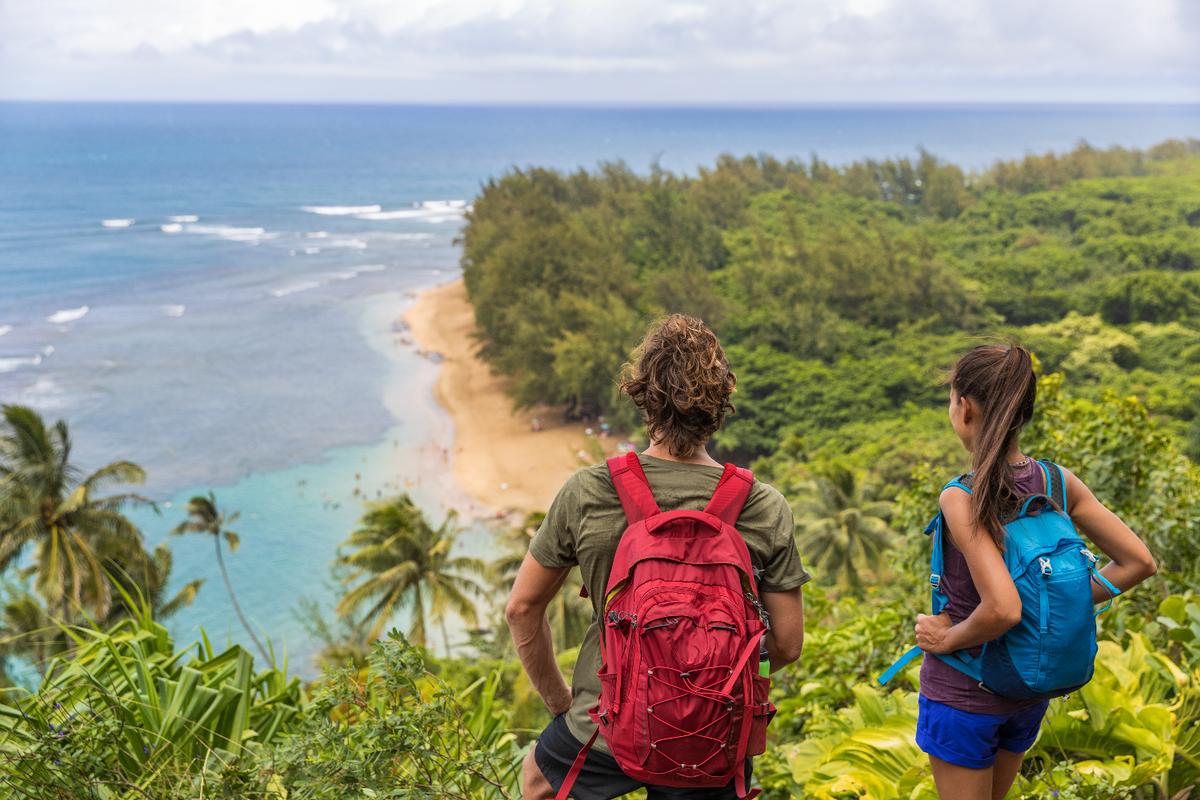
Honolulu
I think this is one of the absolute best spots in Hawaii when I'm in the mood for both culture, shopping, and the famous Waikiki Beach. We arrived from our home on the Big Island of Hawaii but you can fly into Daniel K. Inouye International Airport (HNL) if you are coming from the mainland.
On our fist day, we loved visiting Iolani Palace, followed by Pearl Harbor & USS Arizona Memorial, and finally the Bishop Museum. Since there is so much to take in, we decided to join a guided tour with a local guide on our first visit which was a great idea.
In the afternoon, we checked into the elegant 5-star Halekulani Hotel for two days, a AAA Five Diamond award winner right on Waikiki Beach, with just the best sunset views!
Next day, I enjoyed hiking up Diamond Head Crater before it got hot first thing in the morning, following by refreshing snorkeling in Hanauma Bay, and then doing some shopping in Waikiki in the afternoon. Going to a Hula show in the evening in Waikiki was my personal favorite.
What I loved best:
Food was a highlight of our Honolulu trip! I've always thought that Honolulu is such a cool culinary destination where you can literally find flavors from around the world! When we lived on the Big Island we hopped on a 50-minute flight from Kona to Honolulu, where we sampled great Italian dishes at Arancino di Mare and Taormina Sicilian Cuisine; Chinese eats at Jade Dynasty Seafood Restaurant; Japanese at Tonkatsu Tamafuji; and various cheap local eats at Steak Shack. We often brought treats from Leonard's Bakery back with us for our friends.
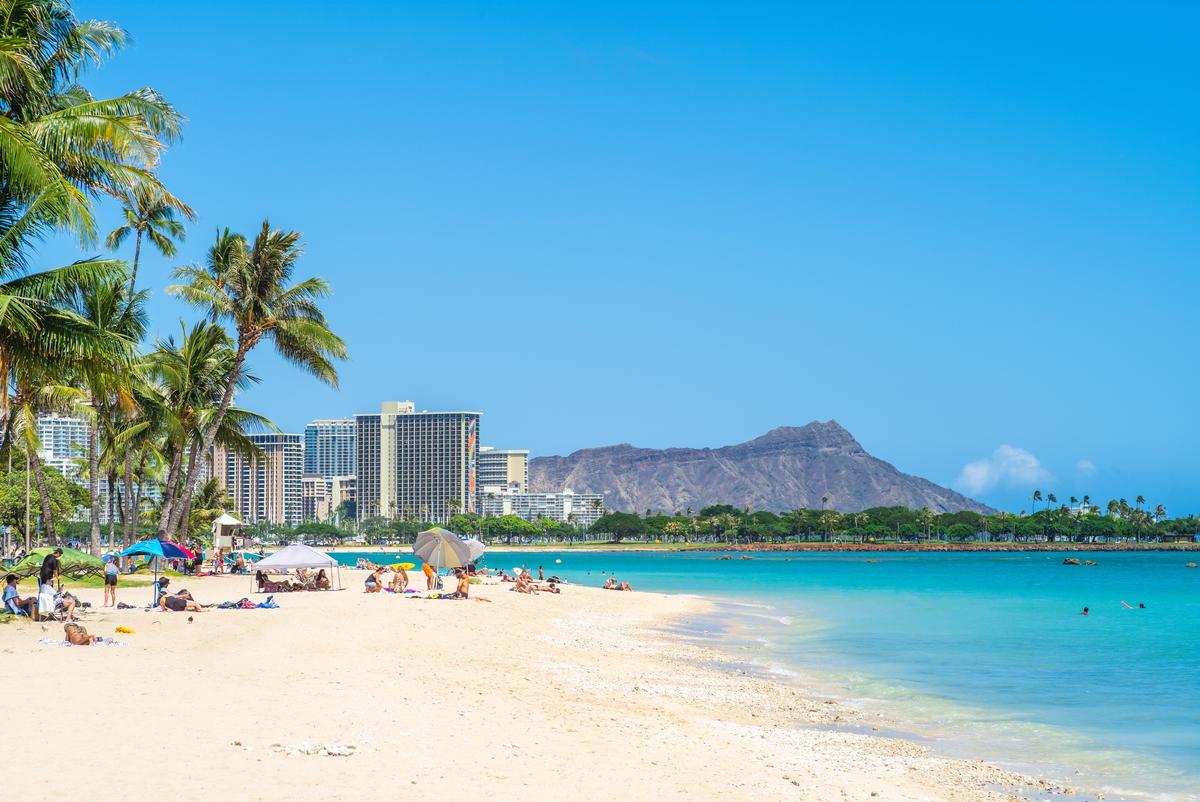
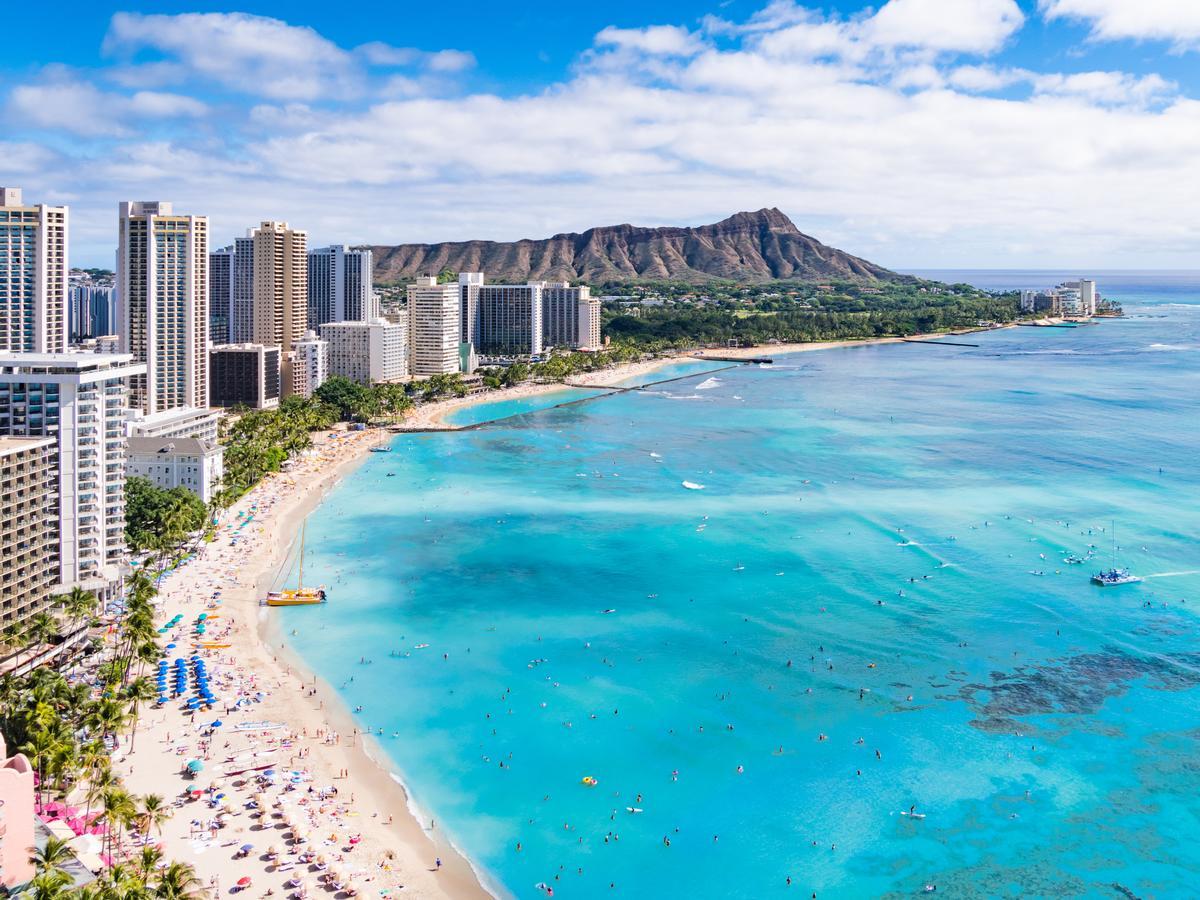
Outrigger Reef Waikiki Beach Resort, Oahu
Ready for a Hawaiian beachfront escape? Check out Outrigger Reef Waikiki, a real standout!
We drove less than half an hour from Honolulu’s airport Waikiki’s shoreline. From the moment I stepped into the open-air lobby filled with Hawaiian art and live music, I felt instantly immersed in the aloha spirit—it set the tone for my whole stay.
Our room for two days was spacious, with island-inspired décor, a comfy bed, and modern amenities.
We swam in the ocean, then took a hula lesson and a lei-making class. Then we relaxed just admiring the sunset from the beach.
In the evening, I loved dining at Kani Ka Pila Grille, where live Hawaiian music filled the evenings—it was the best way to enjoy fresh island cuisine under the stars.
Check prices or availability at Outrigger Reef Waikiki Beach Resort
What I loved best:
My favorite part was waking up to the sound of the waves and stepping out onto a balcony overlooking the turquoise ocean—those views alone made it unforgettable.
In addition, relaxing by the pool with a tropical cocktail in hand felt like the perfect balance of luxury and laid-back island life—my favorite kind of vacation vibe.
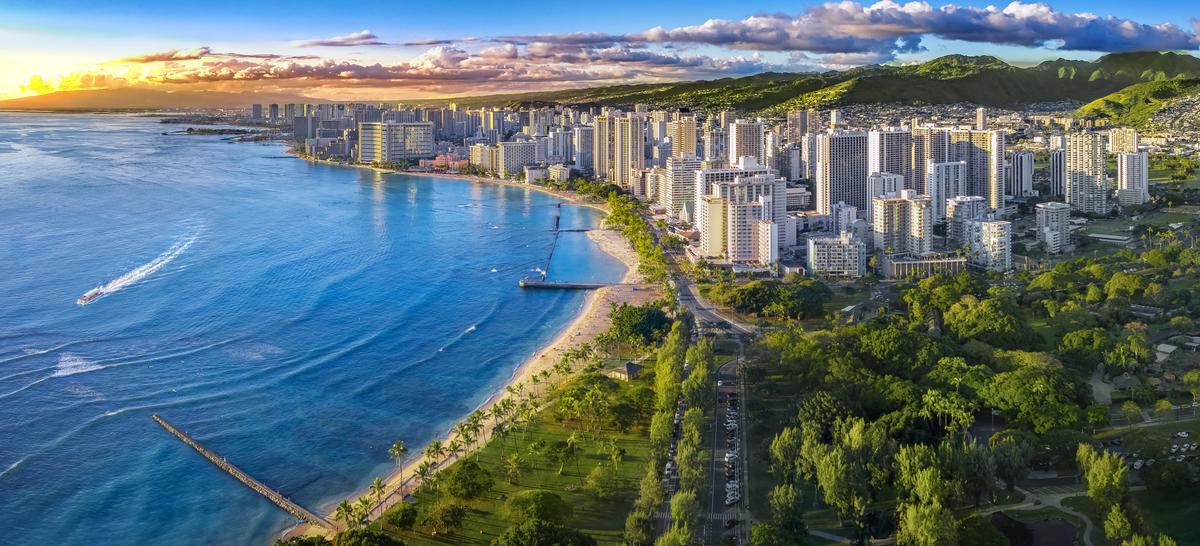
Oahu
Beyond Hawaii’s capital Honolulu, I thought this was such a cool Hawaiian island to explore on a road trip when we moved to Hawaii, my #3 best place to visit in Hawaii.
I loved the hidden surf towns, lush valleys, and quiet coves that feel a world away. First, we took a scenic drive to the North Shore, followed by a stay at The Ritz-Carlton Oahu, Turtle Bay ($633/night). The resort had great food and we got to watch world-famous surfers handle themselves on the waves (especially in the winter!). Be sure to leave some time to explore Haleiwa town too!
Closer to Honolulu in Ko Olina (about an hour if you don't hit heavy traffic) is Aulani, A Disney Resort & Spa ($637/night) where were spent two relaxing days with our son. I think it's the best place on Oahu for families with little kids because there's so much family-friendly dining, amenities, and little ones under 48 inches can have fun at Menehune Bridge, water slides, and a climbing play structure.
What I loved best:
I think that Oahu is one of the best places to visit in Hawaii. Why? With tons of hotels and vacation rentals to choose from, great beaches, attractions and natural areas, it's an unforgettable destination!
Returning to our room with a lanai overlooking the ocean and a comfortable king bed after a 60-minute Hawaiian Renewal Facial using organic Hawaiian grown ingredients at The Ritz-Carlton Oahu, Turtle Bay spa.
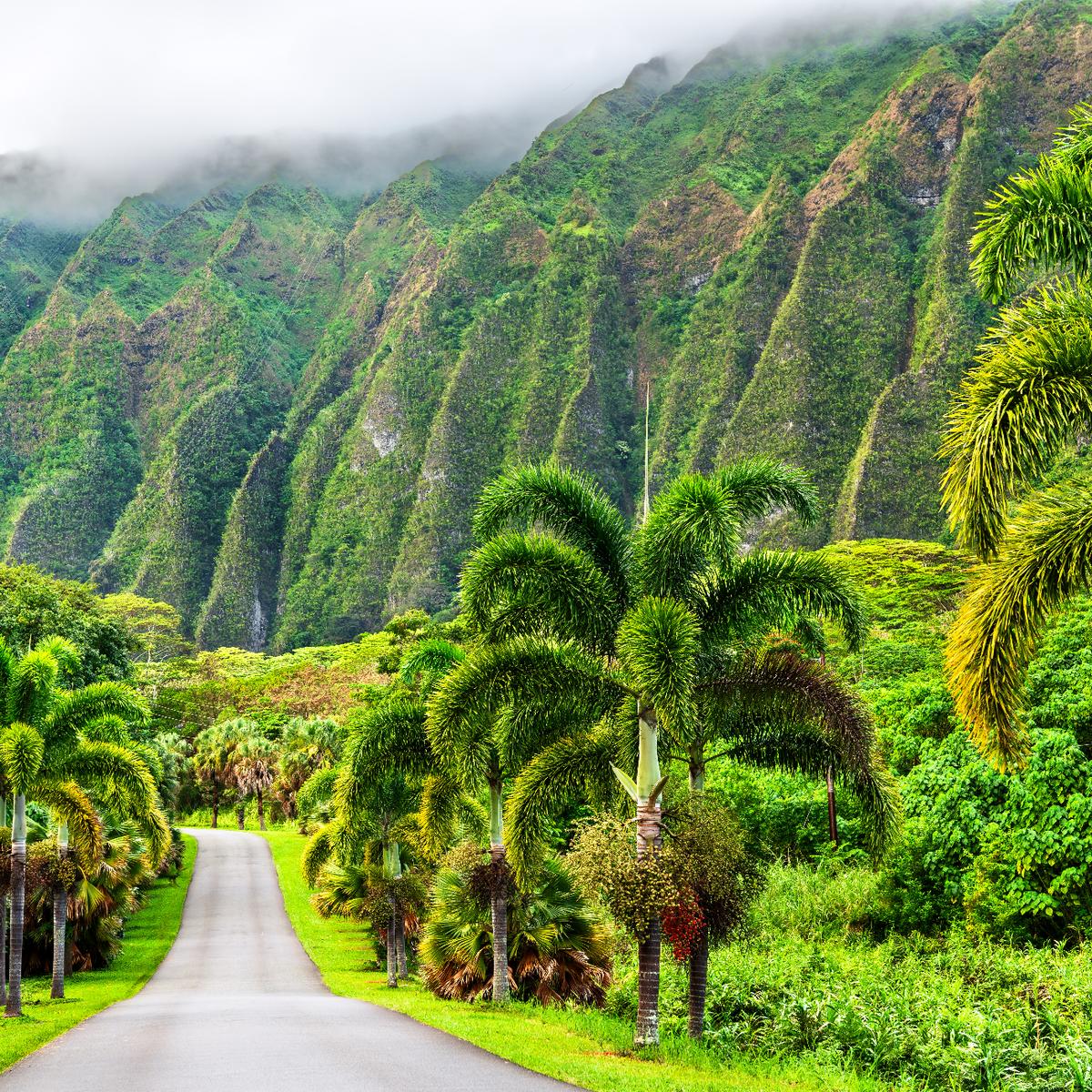
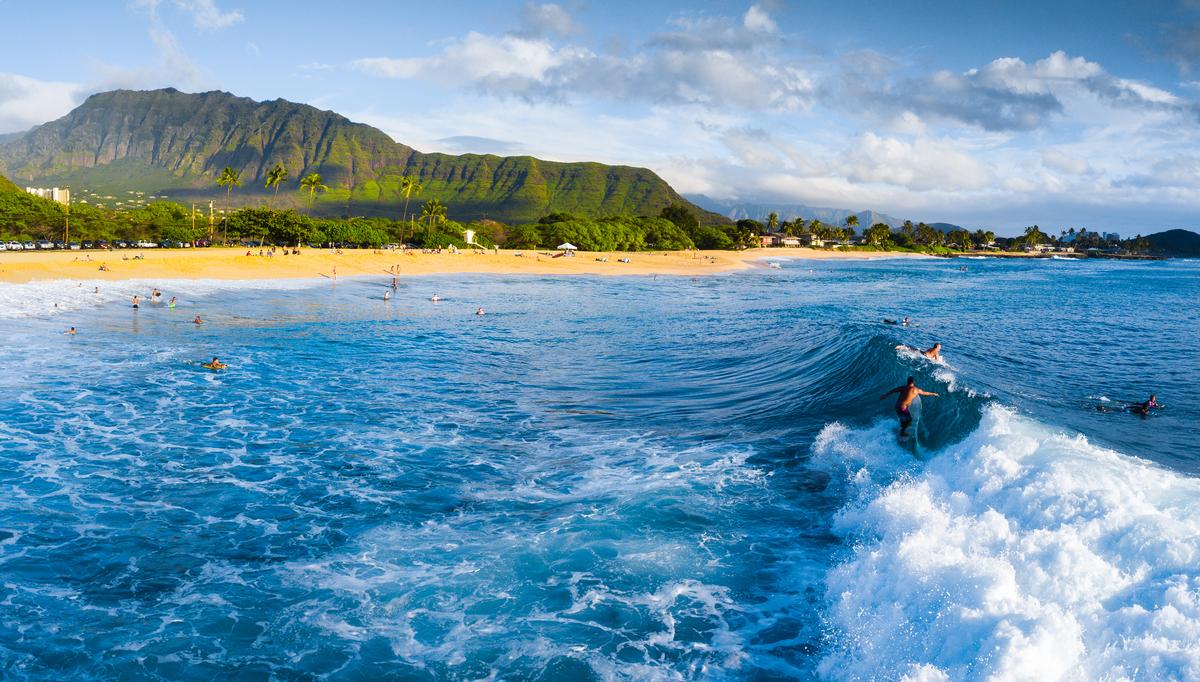
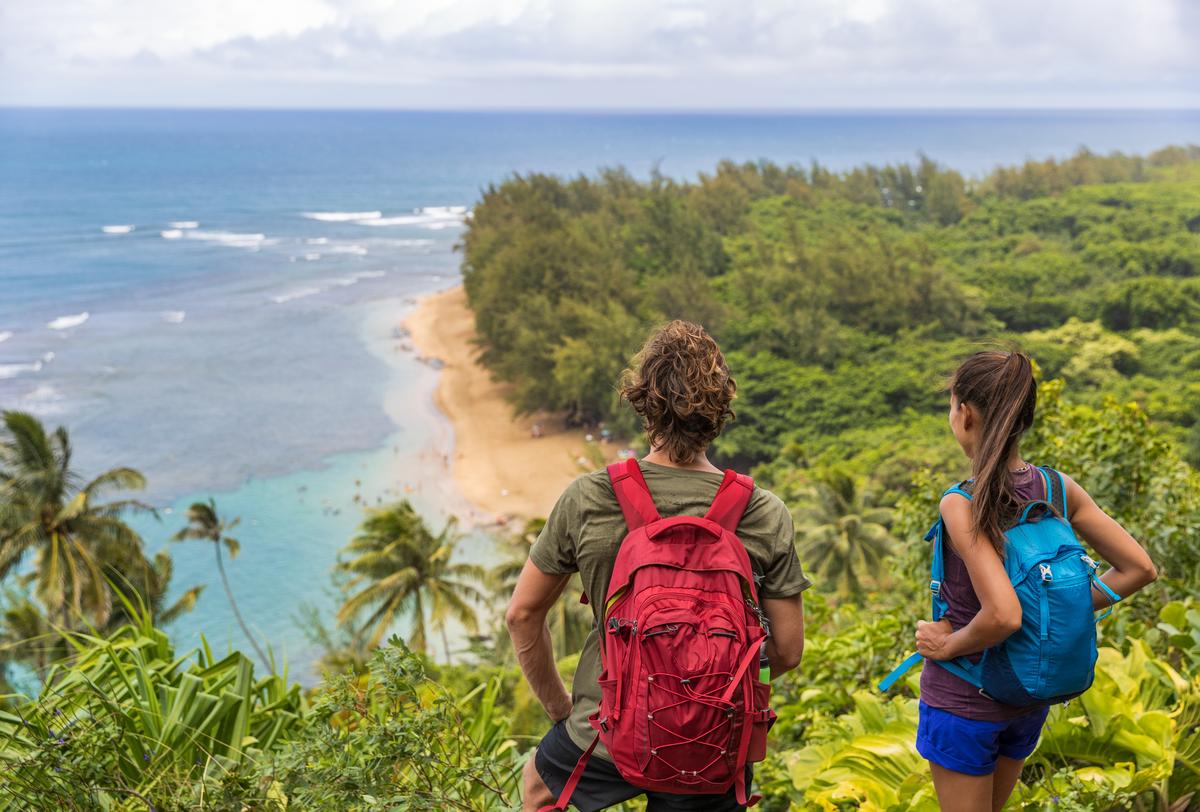
Kauai
Known as the Garden Island, this is one of the most unspoiled and breathtaking places, my #4 best place to visit in Hawaii. Kauai is pure paradise for anyone who loves landscapes that look like they’ve barely changed in centuries.
From the moment we landed, the air smelled sweeter, the colors felt richer, and everything invited us to slow down together.
We instantly loved how easy it was to explore by car, winding along coastal roads and through lush valleys, pulling over whenever something beautiful caught our eye...which was often. The contrast between emerald mountains and turquoise water never stopped amazing me. in Kauai.
One of our most unforgettable days was along the Na Pali Coast, where towering cliffs dropped dramatically into the sea. Whether viewed by boat or from a scenic lookout, it felt otherworldly—raw, powerful, and humbling in the best way.
Hiking in Waimea Canyon, the “Grand Canyon of the Pacific,” gave us sweeping views painted in deep reds and greens.
In the north, Hanalei stole my heart with its laid-back charm. We lingered over coffee, wandered through town, and ended the day watching the sky melt into shades of pink and violet over the bay.
We made space for pure relaxation too—slow lunches, ocean swims, and evenings where the only plan was a sunset. Candlelit dinners with the sound of waves nearby made every night feel intimate and unhurried.
My highlights?
I thought that Kauai was one of the best places to go in Hawaii when we lived in this magical state.
Hiking along the Na Pali Coast was unforgettable after we checked into Hanalei Colony Resort for two days. In addition, at the end of the day, sunsets were simply spectacular from our condo and perfectly timed just before dinner.

Kona, Big Island of Hawaii
We absolutely love Kona, and have been many times, that's why I'm ending where I started...on the Big Island of Hawaii, on the West Coast (I told you I was biased)!
We got up early and drove from our condo where we lived south to Kona. First thing in the morning, we enjoyed walking hand in hand along Ali'i Drive, with waves crashing just steps away. We stopped for coffee in a cozy retro cafe, set at an outdoor table and talked about how great Kona coffee tasted and how there are adorable geckos everywhere.
My plan was to walk around Kona's most important historic sites before it got too hot (for me, that's 11 am when I prefer to be somewhere near the water!).
Our deeply meaningful morning stop in Kona was Pu'uhonua o Honaunau, where we learned about Hawaiian history and culture, walking quietly through sacred grounds. Meaning a sacred "Place of Refuge" , this is where ancient Hawaiians could find sanctuary, offering spiritual protection and a chance for forgiveness through ritual and penance (now preserved as a beautiful National Historical Park).
We headed to Kua Bay (Manini'owali Beach) right after (reaching it before noon), my favorite beach near Kona, just south of Four Seasons Resort Hualalai. We brought a picnic lunch with us from Island Naturals Market & Deli (with plenty of water!), so we had everything we needed to swim, snorkel, nap and end the day with a spectacular Kona sunset it's famous for!
What I loved best:
For me, Kona is one of the best places to visit in Hawaii and I still feel very grateful that we lived in such a beautiful spot for more than half a decade!
On our last trip back, I timed my visit for the Kona Coffee Cultural Festival ($10 for all 10 days, ages 5 and under are free), a weeklong celebration of coffee and Hawaiian culture, and it turned out to be my favorite highlight.
Tasting peaberry espresso at Greenwell Farms, surrounded by blooming coffee trees, and savoring seared ahi tacos and local craft beer at Umekes Fishmarket Bar & Grill, were both highlights too.
Lanai and Molokai (#5 and #6 best places to visit in Hawaii)
What about the other two islands open to tourism, Lanai and Molokai are incredible destinations too, but unfortunately I only visited each island once so I will leave them to the experts! My main downside about Lanai was cost because you are already spending so much to reach one of Hawaii's main islands. We never returned to Molokai after my favorite place to stay, Molokai Ranch, closed.
I think that visiting one of the four bigger islands (Big Island, Maui, Oahu, or Kauai) is the way to go if you have just a limited amount of time to explore on vacation. On your third or fourth visit back to the Hawaiian islands, Molokai and Lanai might be worth looking into!
Wow! Congratulations for reading through all my Best Places to Visit in Hawaii on a Road Trip. I hope that our experiences inspire you to go on your own road trip to one (or more!) of my favorite USA destinations!

Booking Checklist
1. Book Your Flight - I use Expedia because I like their mobile app with my itinerary. They've helped me re-book flights on many occasions. Once you reach their Gold tier, support is especially good.
2. Book Your Hotel - I use Booking.com or Expedia, depending on my destination.
3. Book Your Rental Car - I use Expedia.
4. Book your tours on Viator or Get Your Guide.
5. If you are planning to visit more than three national parks in the next 12 months, we've found that buying the America the Beautiful Pass is cost effective.
